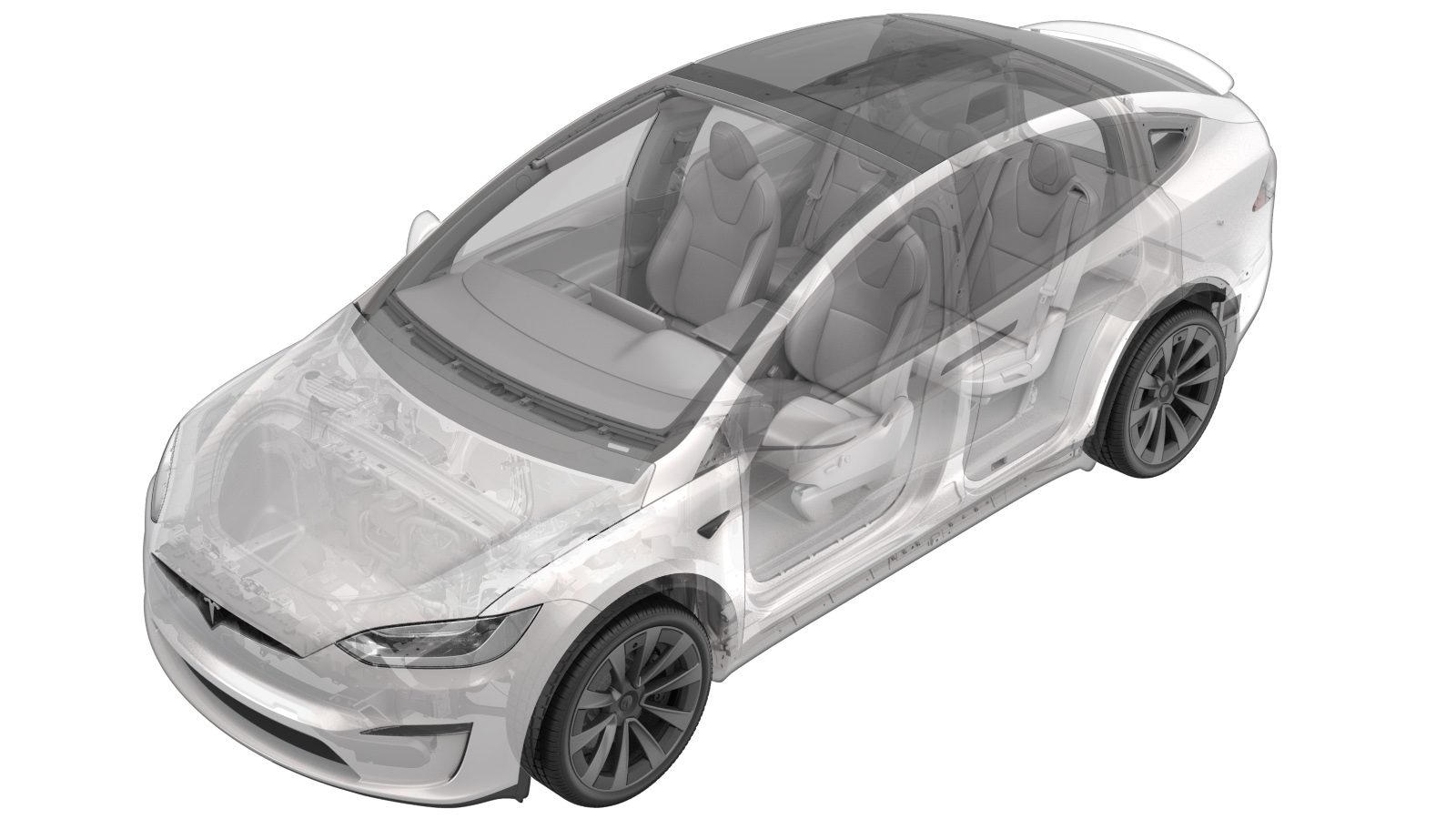Valve Block - Air Suspension (Remove and Replace)
 Correction code
31102202
1.56
NOTE: Unless otherwise explicitly
stated in the procedure, the above correction code and FRT reflect all of the work
required to perform this procedure, including the linked procedures. Do not stack correction codes unless
explicitly told to do so.
NOTE: See Flat Rate Times to learn
more about FRTs and how they are created. To provide feedback on FRT values, email ServiceManualFeedback@tesla.com.
NOTE: See Personal Protection to make sure proper PPE is worn when
performing the below
procedure.
Correction code
31102202
1.56
NOTE: Unless otherwise explicitly
stated in the procedure, the above correction code and FRT reflect all of the work
required to perform this procedure, including the linked procedures. Do not stack correction codes unless
explicitly told to do so.
NOTE: See Flat Rate Times to learn
more about FRTs and how they are created. To provide feedback on FRT values, email ServiceManualFeedback@tesla.com.
NOTE: See Personal Protection to make sure proper PPE is worn when
performing the below
procedure.
Remove
- Open the LH front door and lower the LH front window.
- Raise and support the vehicle on a 2 post lift. See Raise Vehicle - 2 Post Lift.
- Connect a laptop with Toolbox to the vehicle. See Toolbox (Connect and Disconnect).
- In Toolbox, click the Actions tab, and then search for TAS service mode.
-
Click PROC_TAS_X_ENTER-SERVICE-MODEvia Toolbox: (link), and then click Run. Allow the routine to
complete before continuing to the next step.
NoteClick the X at the top right of window to close once complete.
- Click the Actions tab, and then search for Deflate.
-
Click PROC_TAS_X_DEFLATEvia Toolbox: (link)via Service Mode: Chassis ➜ Suspension ➜ Deflate, and
then click Run.
Allow the routine to complete before continuing to the next step.
NoteClick the X at the top right of window to close once complete.
- Remove the rear underhood apron. See Underhood Apron - Rear (Remove and Replace).
- Remove the LH and RH underhood aprons. See Underhood Apron - LH (Remove and Replace).
- Remove the front underhood apron. See Underhood Apron - Front (Remove and Replace).
- Remove the underhood storage unit access panel. See Underhood Storage Unit Access Panel (Remove and Replace).
- Remove the underhood storage unit. See Underhood Storage Unit (Remove and Install).
-
Remove the schrader valve cap from the
superbeam.
- Disconnect LV power. See LV Power (Disconnect and Connect).
- Remove the LH front and RH front wheels. See Wheel Assembly (Remove and Install).
- Remove the front fascia. See Fascia Assembly - Front (Remove and Install).
- Raise the vehicle to a comfortable working height. See Raise Vehicle - 2 Post Lift.
-
Disconnect the air compressor
electrical connectors (x2).
-
Release the clip that attaches the
intake valve to the body.
-
Remove the fasteners (x3) that attach
the air suspension compressor carrier bracket to the air suspension compressor
bracket.
 5 Nm (3.7 lbs-ft)TIpUse of the following tool(s) is recommended:
5 Nm (3.7 lbs-ft)TIpUse of the following tool(s) is recommended:- Torx T30 socket
NoteSpring seats (x3)NoteThe compressor will be free hanging after the springs are removed. Safely support the assembly with hangers or bungee cords. -
Disconnect the air suspension valve
block electrical connector.
-
Remove the nuts (x4) that attach the
front and rear air spring module lines to the air suspension valve block.
 2 Nm (1.5 lbs-ft)TIpUse of the following tool(s) is recommended:
2 Nm (1.5 lbs-ft)TIpUse of the following tool(s) is recommended:- 10 mm 12 point combination wrench
-
Remove the nut that attaches the
reservoir line to the air suspension valve block.
 3.5 Nm (2.6 lbs-ft)TIpUse of the following tool(s) is recommended:
3.5 Nm (2.6 lbs-ft)TIpUse of the following tool(s) is recommended:- 12 mm 12 point combination wrench
-
Remove the nut that attaches the
compressor line to the air suspension valve block.
 3.5 Nm (2.6 lbs-ft)TIpUse of the following tool(s) is recommended:
3.5 Nm (2.6 lbs-ft)TIpUse of the following tool(s) is recommended:- 12 mm 12 point combination wrench
-
Remove the nut that attaches the boost
line to the air suspension valve block.
 2 Nm (1.5 lbs-ft)TIpUse of the following tool(s) is recommended:
2 Nm (1.5 lbs-ft)TIpUse of the following tool(s) is recommended:- 10 mm 12 point combination wrench
-
Remove the voss fittings from each air
line.
NoteVoss fittings (x7)NoteSlide the threaded section back. Use a flat blade screwdriver to snap off the old compression sleeve, and then slide the threaded section off of air line. Discard after removal.
-
Remove the bolts (x2) that attach the
air suspension valve block to the air suspension compressor bracket, and then remove the
valve block from the vehicle.
 5 Nm (3.7 lbs-ft)TIpUse of the following tool(s) is recommended:
5 Nm (3.7 lbs-ft)TIpUse of the following tool(s) is recommended:- Torx T30 socket
NoteBolts are located on the underside of the bracket.
Install
-
Position the air suspension valve
block into the vehicle, and then install the bolts (x2) that attach the valve block to
the air suspension compressor bracket.
 5 Nm (3.7 lbs-ft)TIpUse of the following tool(s) is recommended:
5 Nm (3.7 lbs-ft)TIpUse of the following tool(s) is recommended:- Torx T30 socket
NoteBolts are located on the underside of the bracket. -
Remove the plastic plugs (x7) from the
new air suspension valve block.
-
Install the boost line into the air
suspension valve block.
NotePress the hose into the fitting until the mark aligns with the top of the fitting.NoteVerify line is properly secured by performing a push-pull test.
-
Install the compressor line into the
air suspension valve block.
NotePress the hose into the fitting until the mark aligns with the top of the fitting.NoteVerify line is properly secured by performing a push-pull test.
-
Install the reservoir line into the
air suspension valve block.
NotePress the hose into the fitting until the mark aligns with the top of the fitting.NoteVerify line is properly secured by performing a push-pull test.
-
Install the front and rear air spring
module lines (x4) into the air suspension valve block.
NoteInsert the appropriate air suspension line fully into each fitting as labeled on air suspension valve block.NotePress each hose into the fitting until the mark aligns with the top of the fittingNoteVerify each line is properly secured by performing a push-pull test.
-
Connect the air suspension valve block
electrical connector.
-
Install the air suspension compressor
carrier bracket onto the air suspension compressor bracket.
 5 Nm (3.7 lbs-ft)TIpUse of the following tool(s) is recommended:
5 Nm (3.7 lbs-ft)TIpUse of the following tool(s) is recommended:- Torx T30 socket
NoteSpring seats (x3)NoteRemove the hangers or bungee cord from the air suspension compressor carrier bracket. -
Fasten the clip that attaches the
intake valve to the body.
-
Connect the air compressor electrical
connectors.
- Install the front fascia. See Fascia Assembly - Front (Remove and Install).
- Install the LH front and RH front wheels. See Wheel Assembly (Remove and Install).
- Connect LV power. See LV Power (Disconnect and Connect).
-
Set up the nitrogen tank kit
(1083876-00-A) to fill the superbeam reservoir.
NoteVerify the valves are set to the closed position on the tank, regulator, and the air line.
-
Connect the nitrogen tank hose to the
reservoir.
-
Open the valve on the nitrogen tank
and set the pressure to 18 Bar using the regulator.
NoteSlowly open the valve and adjust the regulator.NoteVerify pressure is set to 18 Bar
-
Open the valve on the nitrogen tank
hose.
-
Verify the pressure holds on the
regulator valve gauge.
Note18 BarNoteIf the pressure does not hold, there may be a leak present.
- Re-establish vehicle connection to Toolbox.
- Click the Actions tab, and then search for TAS service mode.
-
Click
PROC_TAS_X_ENTER-NORMAL-MODEvia Toolbox: (link), and then click
Run. Allow the routine to complete before continuing to the
next step.
NoteClick the X at the top right of window to close once complete.
- Disconnect the laptop from the vehicle. See Toolbox (Connect and Disconnect).
-
Remove the air suspension from "Jack
Mode."
-
Close the valve on the nitrogen tank
hose.
-
Remove the nitrogen tank hose from the
reservoir.
-
Install the cap onto the reservoir
valve.
-
Close the valve on the nitrogen
tank.
-
Close the pressure regulator valve on
the nitrogen tank to release the line pressure in the lines.
- Install the underhood storage unit. See Underhood Storage Unit (Remove and Install).
- Install the underhood storage unit access panel. See Underhood Storage Unit Access Panel (Remove and Replace).
- Install the front underhood apron. See Underhood Apron - Front (Remove and Replace).
- Install the LH and RH underhood aprons. See Underhood Apron - LH (Remove and Replace).
- Install the rear underhood apron. See Underhood Apron - Rear (Remove and Replace).
-
Calibrate the rear doors.
NoteIf the "Calibration Needed" message appears on the vehicle touchscreen, touch and hold Calibrate to calibrate the rear doors.
- Raise LH front window and close the LH front door.